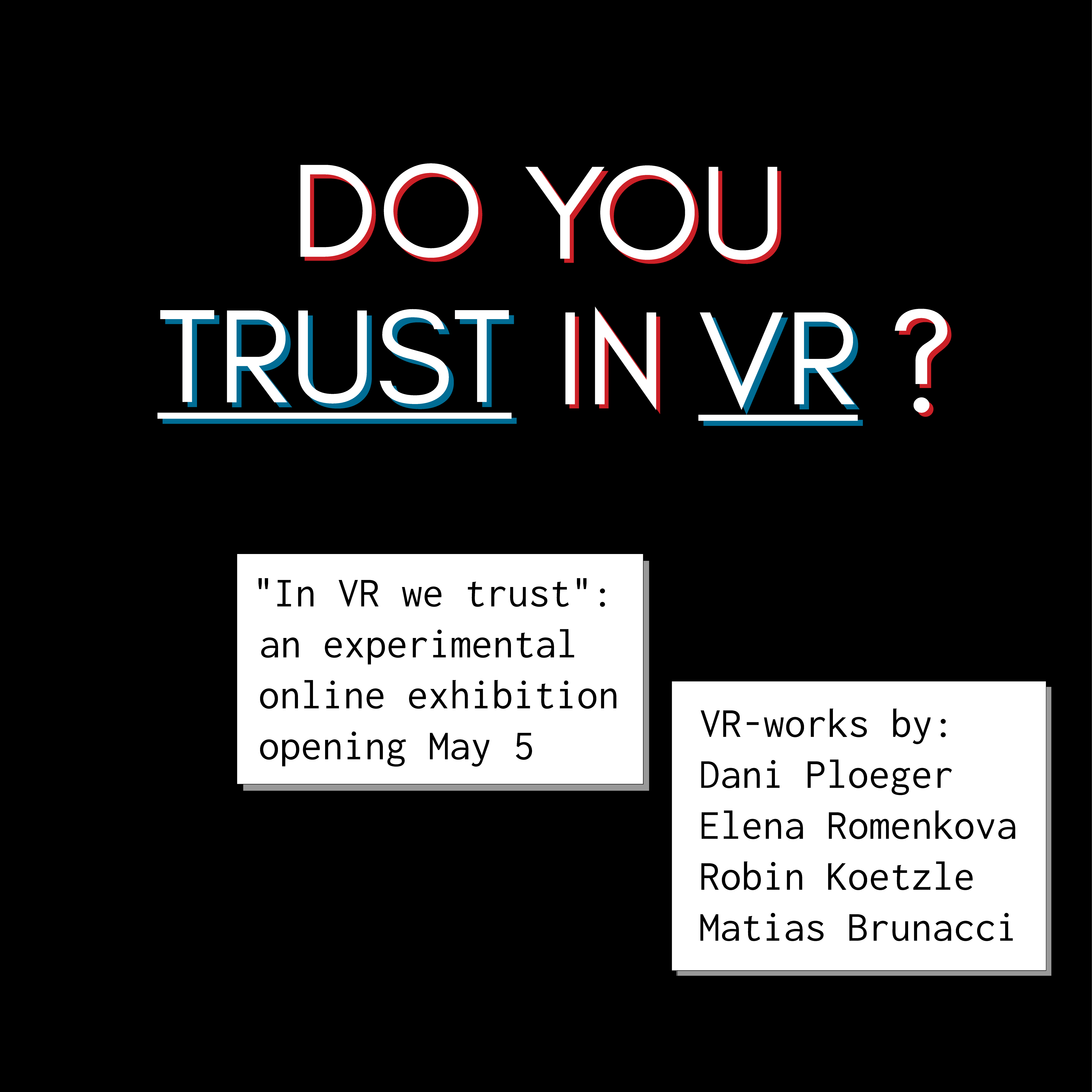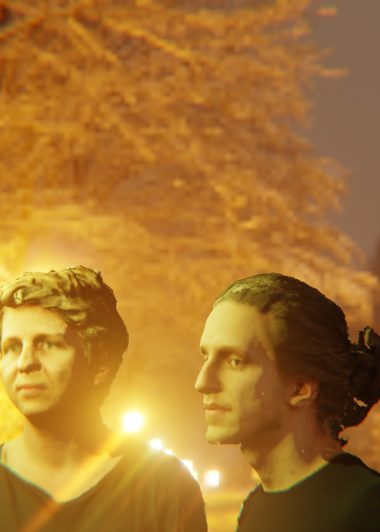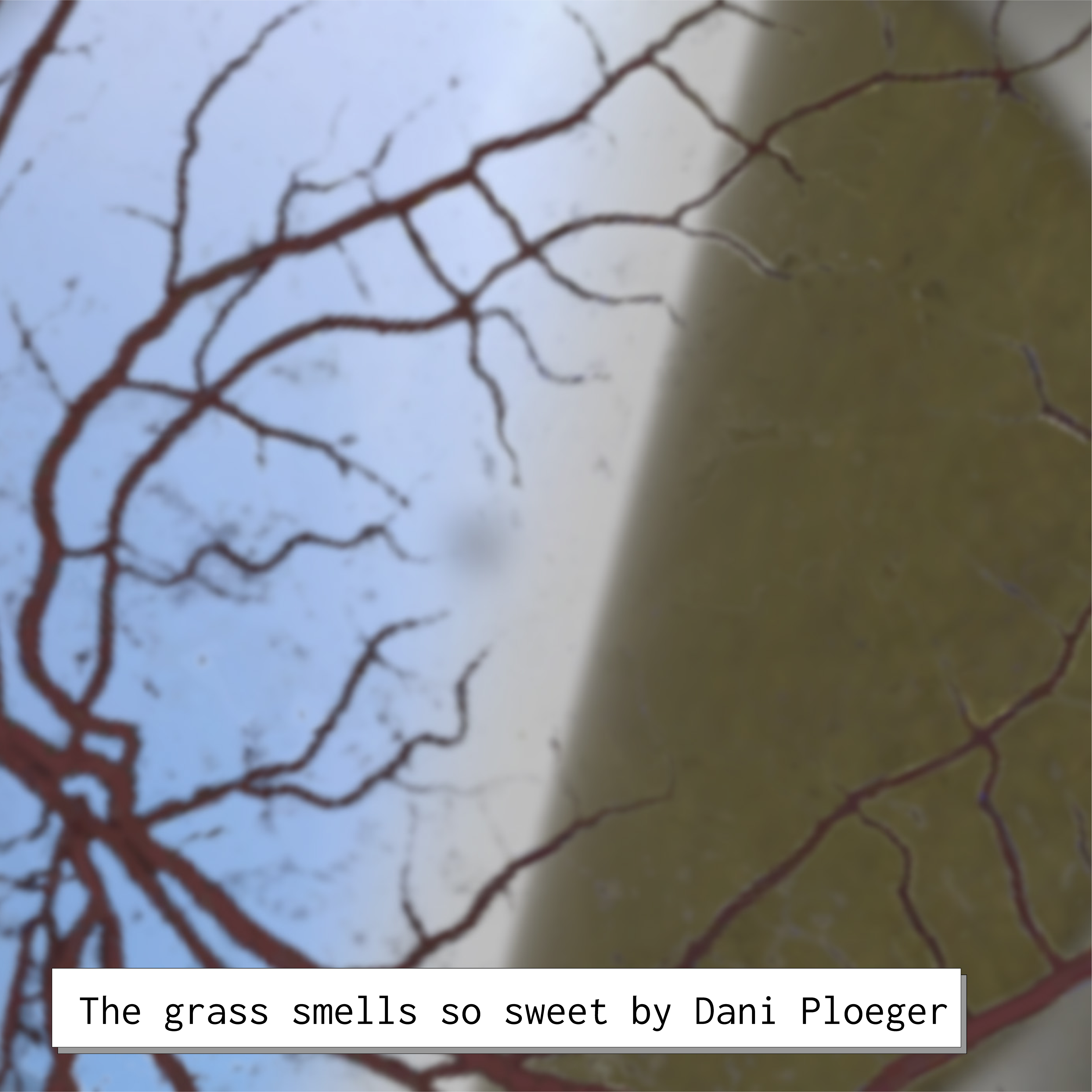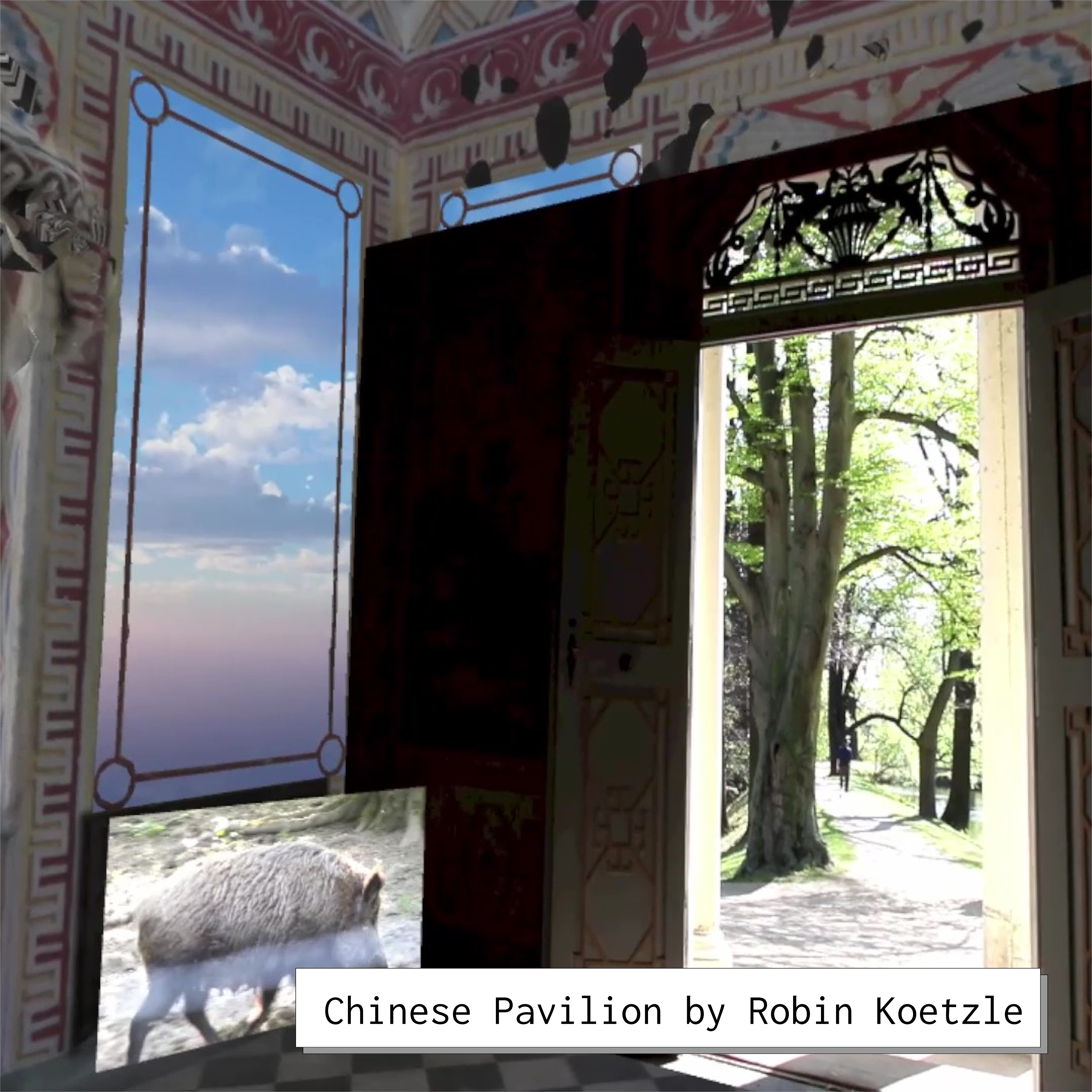
- Exhibition
In VR we trust
- VR
Dates
5.5.2022-31.12.2023
Do you also want to ride on the virtual reality hypetrain? Do you dream of a mixture of pew-pew special effects and empathising, euphoric experiences? Do you believe in VR? Do you believe in immersion? Do you believe in the breakthrough that VR will have as a new medium in our society?
The exhibition, originally planned for the NRW Forum in Düsseldorf and the Nudel in Zeitz, aims to reflect on the current status and future value of virtual reality as an artistic tool or medium on the basis of four critical positions and at the same time to enable a public discussion about it.
Due to the effects of the pandemic and the uncertain situation for visitors to the exhibition, we decided not to hold the exhibition in the planned venues in Düsseldorf and Zeitz. Instead, a postal-virtual adaptation ooened on May 5th, 2021, that can be viewed on https://doubt.invr.info/ with a cardboard.
Do you also want to ride on the virtual reality hypetrain? Do you dream of a mixture of pew-pew special effects and empathising, euphoric experiences? Do you believe in VR? Do you believe in immersion? Do you believe in the breakthrough that VR will have as a new medium in our society?
The exhibition, originally planned for the NRW Forum in Düsseldorf and the Nudel in Zeitz, aims to reflect on the current status and future value of virtual reality as an artistic tool or medium on the basis of four critical positions and at the same time to enable a public discussion about it.
Due to the effects of the pandemic and the uncertain situation for visitors to the exhibition, we decided not to hold the exhibition in the planned venues in Düsseldorf and Zeitz. Instead, a postal-virtual adaptation ooened on May 5th, 2021, that can be viewed on https://doubt.invr.info/ with a cardboard.
Curatorial statement
In September we published a shortlist of ten quite diverse VR artworks. In the weeks since we've posed ourselves and the co-curators to interrogate each work not only as an artwork, but also how it uses VR, how it addresses challenges when working with VR, where it pushes the known boundaries of VR, and ultimately why the artwork is and should be a VR artwork.
To approach these questions we tried to identify and isolate certain aspects of art in/with VR. In the following we will name a range of them and thereby name the four artworks that will be included in the exhibitions in Zeitz and Düsseldorf next year.
We'd like to thank everybody who submitted an artwork for their effort and regret being unable to accomodate more pieces. Yet it was only through the numerous submission that we were able to shape the following understanding of VR. We would like to invite all submitting artists to join the discussion during the exhibitions.
One omni-present interest and challenge when connecting virtual and physical environments are the re-mediations of experiences as well as the overlapping experiences of re-mediated elements. Dani Ploeger's The Grass smells so sweet is full of inter-media connections: On a flat screen you can read testimonials and expect to practice your empathy by undergoing an interpreted representation of them in VR. Actual living grass in the exhibition space and an aroma dispenser spreading grass scent raise your expectations of a technically and aesthetically advanced experience — only to find your assumptions on VR experiences subverted.
To the contrary, two works employ lush and very digital graphics: Elena Romenkova's Gliese 667 Cc takes us on a journey through impossible rooms. Being a 360° movie we are forced to take in the variations of objects and materials/shaders while the camera — replacing our virtual nonexistent body — steadily moves on. But what do we see here? The boundary between a virtual exhibition of several works and an exhibition as the virtual work itself is blurred, just like the human body and the hypothetical technological pendant of that very body. This is further intensified by elements within the virtual world, such as screens showing aesthetically similar worlds or numerous representations of bodies.
A contrasting use of body presence is found in Matias Brunacci's Virtualshamanism. The work includes representations of our body and explores interaction by using the (digitized) body as an interface. The virtual realm is posed as not only a technological but also a spiritual space. The virtual reality appears as a meditation about the world, the capabilities of the technology simulate a portal into another, higher consciousness. In the exploration of this possibility — similar to Ploeger's work — we are confronted with the supposed "experience" of something by being put into a crafted setting.
Last but not least Robin Kötzle's Chinesischer Pavillon (Chinese Pavilion) stands out in it's playful yet political collage of digital media. In a very self-evident way, modeled and scanned 3D objects, images and videos contrast and complement each other to create an unpretentious experience that asks us questions about our relationship to (virtual) representation and, in this respect, the integrity of our own body. The implicitness with which VR is used in this setting without being unalert of its unique traits sheds light into what a VR art of the future might look like.
We're very excited to show you these pieces next year and discuss them - because one thing was very obvious in our process: we're still learning how to talk about VR, what to relate it to, and how to document it in 2D material — thus seeing a piece in VR yourself makes all the difference. We hope to welcome you in one of the exhibitions where you can validate our take on VR and discuss it with the artists, the audience, and us.
Online from May 5th 2021




